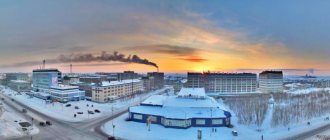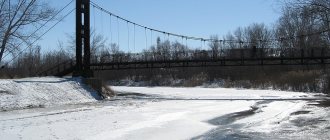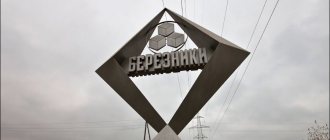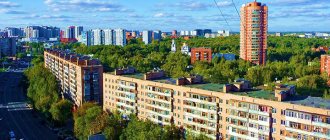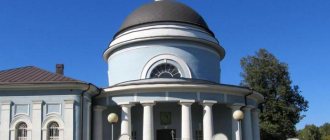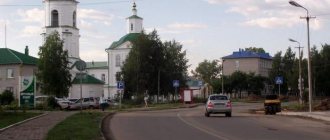On the 78th anniversary of Vorkuta receiving city status, NEVSKIE NEWS talks about its past - both terrible and beautiful, as well as its alarming present, because this region tops the Komi anti-rating for population outflow.
Ice-bound Vorkuta was formed as a city 78 years ago - November 26, 1946. It was a city of excellence, a city of advanced valor. Now Vorkuta is going through hard times - entire villages are becoming ghosts, businesses are closing, and people are leaving the city streets.
How Vorkuta began
Georgy Chernov is a young geologist who graduated from Moscow University in 1930 and received his first assignment - to explore the distant Vorkuta River for the presence of coal. In the summer, while ascending the river with a small expedition detachment, 70 kilometers from the mouth, Georgy discovered five seams of coal of working power and high quality. This is how Chernov became the discoverer of the Vorkuta coal deposit.
The first experimental industrial mine No. 1/2 was founded in 1932 on the right bank of the Vorkuta River in the place where the village of Rudnik later developed. This mine produced the first coal on the mountain on September 1, 1934 - this day is considered the birthday of the Pechora Coal Basin. All work was carried out manually and only in 1935 a gasoline generator was launched and the use of electricity for industrial purposes began.
The order to create the city of Bolshaya Vorkuta was signed on January 4, 1936, and already in 1937 the construction of a new mine, “Capital” No. 1, began. The work was carried out by prisoners: a small stage of 26 carpenters marked the beginning of the village, and then the city of Vorkuta.
By a decree of the Presidium of the Supreme Soviet of the RSFSR dated January 9, 1940, the village of this mine was transformed into the village of Vorkuta, Bolshezemelsky district (the center was the village of Josedo-Hard) of the Nenets National District of the Arkhangelsk Region. And in October of the same year it was transferred to the Kozhvinsky district of the Komi Autonomous Soviet Socialist Republic.
Vorkuta was recognized as a city at the height of the Great Patriotic War, on November 26, 1943.
Vorkuta Museum and Exhibition Center /
GULAG
The Vorkutlag of the Gulag of the NKVD of the USSR was created in 1938 - one of the largest camps. The number of prisoners in Vorkuta ranged from 15,000 to 73,000 people - they were the ones who mined coal and built the city from scratch. Civilian employees were also involved in the work, but the overwhelming majority were prisoners. The camp was liquidated in January 1960.
One of the most popular Gulag memorial sites among tourists is the Yurshorskoye Memorial Cemetery. It was formed at the site of the murder of 53 prisoners of the 29th separate camp point of mine No. 29 - “Yur-Shor”. After Stalin's death, unrest swept through the camps throughout the country; prisoners asked for improved social and living conditions. However, machine guns were turned against the unarmed prisoners instead. The result is dozens of dead, about 150 people injured. It is important to note that this memorial is a real cemetery; the bodies of the dead prisoners of the Vorkuta Gulag actually rest there.
The story of the “Kashketi execution” is no less gloomy. The Plenum of the Central Committee of the All-Union Communist Party of Bolsheviks in February 1937 decided to fight the “double-dealers.” Trotsky's supporters were collected in camps throughout the country and by the end of 1937 they were shot. In Vorkuta, due to communication difficulties, this happened in March-April 1938. At the site of the execution, local enthusiast Medvedev erected a memorial cross, which is visible from the train at the entrance to Vorkuta. Researchers are still trying to determine the real burial place of those executed. Between 1,100 and 1,300 people were killed.
Blogger Alexander Voronchuk, host of the RUSKI PASKA channel, shared that the trip to Vorkuta became a real revelation for him precisely because of his encounter with the history of the Gulag.
“While staying in Vorkuta, you will definitely come across the topic of the Gulag more than once. Or in a museum exhibition, or in a conversation with a taxi driver, or outside the car window on the roundabout, where the grave crosses of former camp prisoners still stick out of the ground on the side of the road. In this sense, this trip made a strong impression on me; in some ways, it was after this trip that I reconsidered my personal views on our history. You know, you can read a lot of books on the topic, both from historians who work with dry numbers and documents, and the memoirs of those who personally went through the camps of the Komi Autonomous Soviet Socialist Republic during the Stalinist years, but you can only deeply feel all this once you are there, beyond the Arctic Circle.” , said the man.
Voronchuk is convinced that every person is born to be happy.
“Therefore, justifying unfair judicial verdicts and state repressions by the need for industrialization with sayings like “the end justifies the means” and “the forest is cut down and the chips fly” are alien to me and are broken in relation to the private destinies of the people who left their health and their lives in Vorkuta. But that's my personal opinion. Many, as I know, still think differently today,” the blogger noted.
Photo from the personal archive of Dmitry Makhov /
After the Gulag
The end of this dark period in the country's history became the impetus for the rapid development of the city. Thousands of young people flocked to Vorkuta. The formation of new settlements within the city began, and massive housing construction began.
The polar city reached its peak in terms of the number of residents and the level of socio-economic development in 1988-1989, when about 218 thousand citizens lived in the city, including villages. At that time, Vorkutaugol included 13 mines, several service enterprises, a state farm trust system, social and cultural enterprises and consumer services. The total number of employees of the association reached 33 thousand people.
Photo from the personal archive of Dmitry Makhov /
Empty Vorkuta
In Vorkuta there is no shortage of housing for the resettlement of village residents: within the city there are more than 14 thousand empty apartments - municipal and privatized. Someone left, someone died, and the heirs from the “mainland” did not need the Vorkuta apartment. But the mayor’s office does not want to invest in their repair and offers the displaced people housing in the village of Vorgashor, 26 kilometers from the city.
“Vorkuta was included in programs like the Arctic Zone back in the 1990s and 2000s, but it’s still there. The programs boil down to one thing: someday private capital will come to the city, open production facilities, and use their own money to improve Vorkuta. The state will only give benefits to businessmen, while it itself will remain in the role of administrator.”
Vladimir Tishchenko
Head of the Vorkuta City Council Commission on Housing and Communal Services
Such plans look like a utopia; not a single sane entrepreneur would invest in the dying, criminalized Vorkuta. The state should bear most of the costs.
By the way, private large businesses still exist in Vorkuta today.
– Now the real owner of Vorkuta is the owner of Severstal Alexey Mordashov
.
Mordashov needs Vorkuta, while Severstal needs Vorkuta coal. General Director of Vorkutaugol (part of Severstal. - τ.) Nikolai Kigalov
and Mordashov are not Vorkuta residents; they are not affected by the conditions in which their subordinates, the mine workers, live and work. A plan is sent down from Severstal into the mine: to extract so many thousands of tons of coal in a short time. If the task is not completed, we will fire everyone. This is exaggerated, but as close to reality as possible,” says Vladimir Tishchenko.
In 2016, an explosion at the Vorkutaugol mine claimed the lives of 36 people. Photo: Alexey Shtokal/TASS
Let us remind you that in 2021 there was an explosion in the Vorkutaugol mine; a man-made accident claimed the lives of 36 people. After this, the Severnaya mine was closed, like many others that were liquidated in the 90s after an emergency with the death of workers.
– When the investigation was underway, the management of Severnaya ordered that the Vorkuta Ministry of Emergency Situations sign acts on labor protection at the mine. Six people who can be considered “switchmen” were convicted. The real culprit of the tragedy at Severnaya, director Vadim Larin
, fled to England back in 2013, after the deaths of people at the Vorkutinskaya mine. Instead of improving working conditions there after the deaths of people at Severnaya, Severstal closed the still operating Severnaya. A year ago, the mayor’s office decided to liquidate the village of Severny itself,” continues Vladimir Tishchenko.
Modern Vorkuta
Today, only 52,292 people live here, and every year the outflow of population becomes more pronounced. Vorkuta is becoming the leader in the Komi Republic in terms of population decline and the fastest dying city in Russia.
Blogger Voronchuk visited Vorkuta in 2021 as part of a trip to the cities of the Komi Republic. His video story about the city received 339,207 views on the RUSKI PASKA channel.
“There was a temptation to focus the story on the numerous abandoned villages surrounding the city. And there would be no falsehood in this. The views there are stunning and terrifying at the same time. However, I was also interested in something else, to see how people live in the central part of Vorkuta, where the cattle farm is,” shared the interlocutor of NEVSKIYE NEWS.
Despite the fact that it was important for Voronchuk to plunge into the life of the city and communicate with local residents, the man would not have stayed there.
“The outflow of the population is quite understandable to me. No one has the moral right to blame young people for seeking a better life and realizing their potential and opportunities in large centers. Where you were born was not always useful, in a word. It is often more difficult for the older generation to get permanent residence from there. Fortunately, some people still have enough opportunities for this. Living, really, is possible in many places; a person is generally able to adapt to a wide variety of, sometimes even extreme, conditions. As for Vorkuta, unfortunately, I don’t see any bright prospects for residents to stay there. At least in modern Russia. Alas,” the blogger is sure.
However, Voronchuk definitely recommends the city for visiting as a tourist.
“In my opinion, it’s definitely worth a trip to Vorkuta to expand your own geographical horizons. After all, traveling is often associated with a planned annual trip with the whole family to the sea on a package tour. Much less often (but I know a lot of such people) someone decides to visit unpopular tourist places to enrich their internal baggage and gain experience. I shake their hand,” summed up the interlocutor of NEVSKIYE NEWS.
Photo from the personal archive of Dmitry Makhov /
The population of Vorkuta is melting before our eyes, and industries are ceasing to exist. Even Vorkutaugol, Russia’s largest coal mining enterprise, will stop producing thermal coal starting in the first quarter of 2022. Despite this, natives of the city speak exceptionally warmly about their hometown. For example, the head of the Syktyvkar branch of the Urban Projects Foundation, Dmitry Makhov, is confident that Vorkuta has its own, unique atmosphere.
“Vorkuta is a city with beautiful nature, tundra, northern lights, mountains. With kind and sympathetic people. And Moskovskaya and Lenina streets are examples of beautiful architecture. The city is suitable for living. Yes, the city does not have a Vietnamese cafe or water park, but it does have its own northern atmosphere. I would recommend creating more public spaces for citizens, making the environment accessible, and moving people out of dilapidated housing,” Makhov noted.
But the man is not sure about the bright future of the city.
“It’s difficult to say that Vorkuta has a future. Indeed, the other day the State Council of the Komi Republic adopted a deficit budget. Without a strategy and proper funding, it is difficult to create a positive and modern Arctic city,” the urbanist concluded.
And Vorkuta native Daria Lapteva, although she left her homeland, is still in love with Vorkuta and is very worried that the city is gradually falling into decay.
“I left very suddenly for myself; my man initiated the move. But overall I was happy with everything. The argument of many leaving the city is that there is no work there. But this is all subjective; whoever is looking for a job will always find it. I still have a lot of friends in Vorkuta, some work in the mine, some in the service sector. My friend is a groomer, for example, and her activity is in great demand. In general, the infrastructure is developed. In my opinion, there are only two disadvantages. Firstly, it’s really cold there, but you quickly get used to it. Secondly, the high rent is really upsetting,” the girl shared.
The main problem of the city, according to Lapteva, is the lack of funding.
“The city lacks development, nothing new is being built, there is not enough investment. If the mines are closed, Vorkuta will finally die. And I really love returning there,” summed up the interlocutor of NEVSKY NEWS.
Earlier, NEVSKIE NEWS wrote that social activists in Komi stood up to defend historical values. An initiative group from Syktyvkar will go on a tour of the cities of the republic to photograph all the historical monuments found and draw the attention of local authorities to them.
Evgenia Sycheva
- Correspondent
Share article on social networks
- tags
- #story
- #Vorkuta
- #Komi
- #gulag
Sights of Vorkuta
Museums, palaces, theaters
* Vorkuta Museum of Local Lore
Located on Lenin Street. The museum was founded by the association of large factories in Vorkuta. The museum was opened in 1960.
Introduces visitors to the history of the city, Vorkutlag, coal mining and paintings by local artists.
* Palace of Culture of Miners
Located on Peace Square. This pompous building was built in 1961. Such a building should have appeared in the city of miners. Lined with marble slabs, with powerful granite columns and bronze sculptures of miners and builders at the central entrance to the palace.
In front of the building there is a park area with benches and a large fountain.
The palace houses several creative groups, a sports complex and a puppet theater.
* Polar Drama Theater
Located on Jubilee Square. The history of this theater is very interesting. It dates back to 1933, yes. It was founded by repressed political prisoners. Among them there were many people of creative professions. After 10 years, the amateur group grew into a professional theater. And its director was the former artistic director of the Bolshoi Theater, B.A. Mordvinov.
Now the theater is based in a large and beautiful four-story building and bears the name of Boris Mordvinov. The current repertoire of the theater is quite wide - from modern works to classics.
* Museum named after K.G. Vainovsky-Krieger
Located on Lenin Street. This geological museum was opened in 1945. It bears the name of the famous Soviet paleontologist and geologist - Konstantin Genrikhovich Voynovsky-Krieger. The museum is very interesting and popular among tourists.
* Museum of Military Equipment
Located on Victory Square. This is an open-air exhibition of decommissioned military equipment. It consists of a T-55 tank, an infantry fighting vehicle, a howitzer, 2 guns and a Mi-8 helicopter.
Monuments, sculptures and memorials
Victory Monument
Located on Victory Square. It is a monument in the form of weapon trunks entwined with vines. The top of the monument is crowned with a metal stork with a nest. In front of the composition there are machine guns and concrete blocks with children's drawings. Interestingly, the monument was built according to the design of 15-year-old schoolgirl Alexandra Stepanova.
Vorgashorsk coal
This monument was erected in honor of the Vorkuta mines in the center of the village of Vorgashor. It is a tall stele, with a large black cube on top, as a symbol of coal.
Monument to Internationalist Soldiers
Located on Enlightenment Square. Installed in 2010 in honor of the city residents who died in local wars. The monument consists of four closed shields, between which stand sheathed swords. At the bottom of the shields are signs with the names of the dead.
Steam locomotive "EM 720-24"
The monument was erected in 1980 on Privokzalnaya Street. This locomotive was produced in 1924. In 1944, the same locomotive sent the first coal from Vorkuta to Leningrad.
Memorial sign "67 parallel"
The monument is installed between the airport and the railway station. It is a reminder of the fact that Vorkuta is located at 67 degrees north latitude.
The monument is a large ball surrounded by a ring with the inscription “Vorkuta 67 parallel”. The diameter of the structure is 14 meters.
Memorial to the Victims of Political Repression
Installed on Shakhterskaya embankment in honor of the prisoners who died during the construction of mines and coal mining. The monument is a large stone on a pedestal surrounded by barbed wire.
Monument to Chernov
Located at the intersection of Gagarin and Lenin streets. Dedicated to the scientist, leader of the geological expedition Alexander Chernov. It was he who discovered coal deposits in the Pechora Basin in 1924 and officially announced it. The monument is a high stone pedestal, in the middle of which there is a hole carved for the sculpture of the scientist.
Temples and churches of Vorkuta
Iveron Cathedral
Located on Victory Square. The temple was built in 2009 with donations from citizens. This is a beautiful wooden church with five gilded domes and a bell tower also decorated with a dome.
Church of St. Michael the Archangel
Located on Gornyakov Street. It appeared in Vorkuta first - in 1941. It didn’t look like a temple at all, as it was located in the building of a former kindergarten. In 1997, it was completely reconstructed and took on the appearance of an Orthodox church.
Church of the Resurrection
Located in the village of Vorgashor. The church building is a one-story house of worship. You can determine the identity of the church by the small dome on the roof. Services have been conducted here since 2002.

